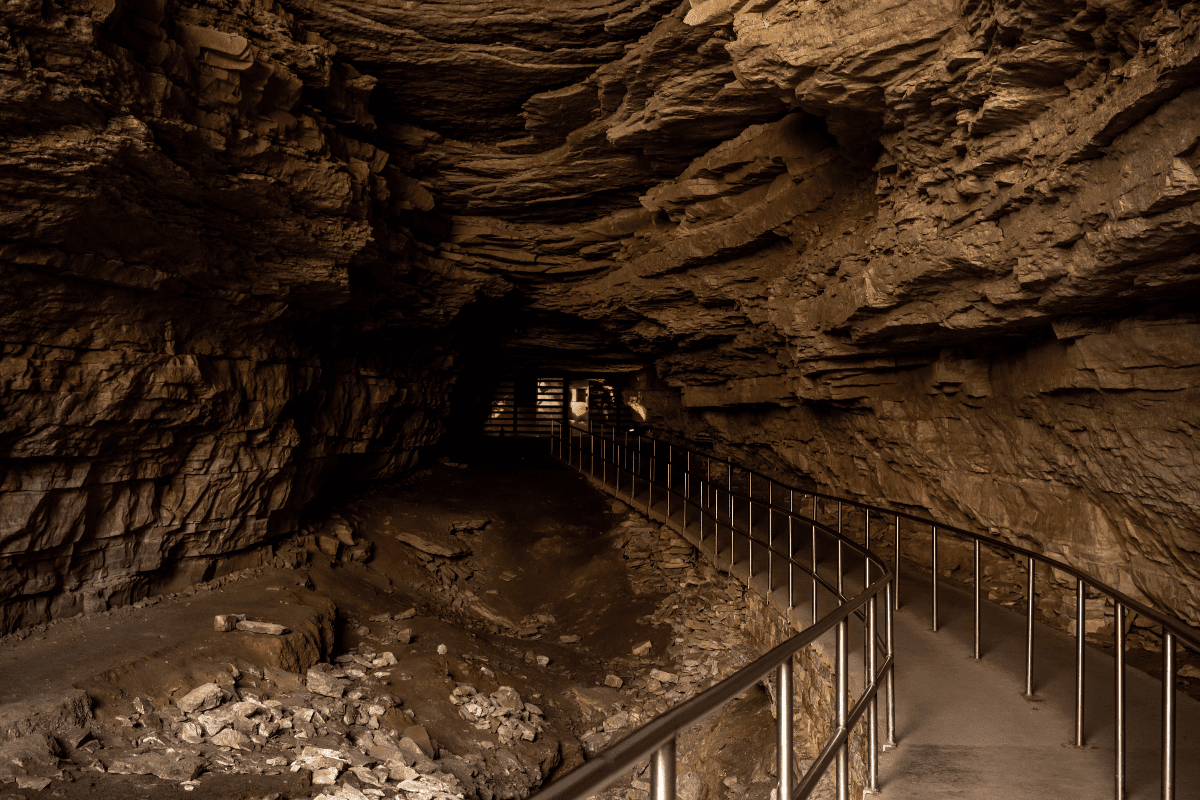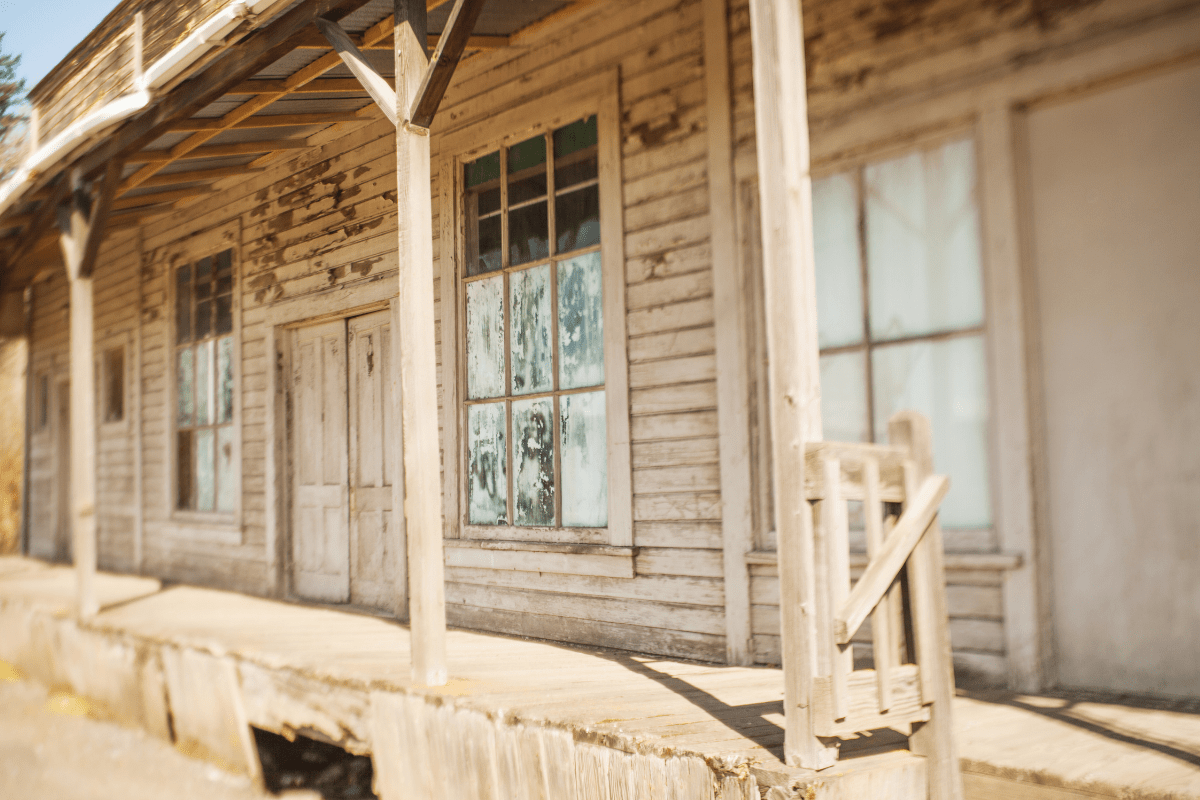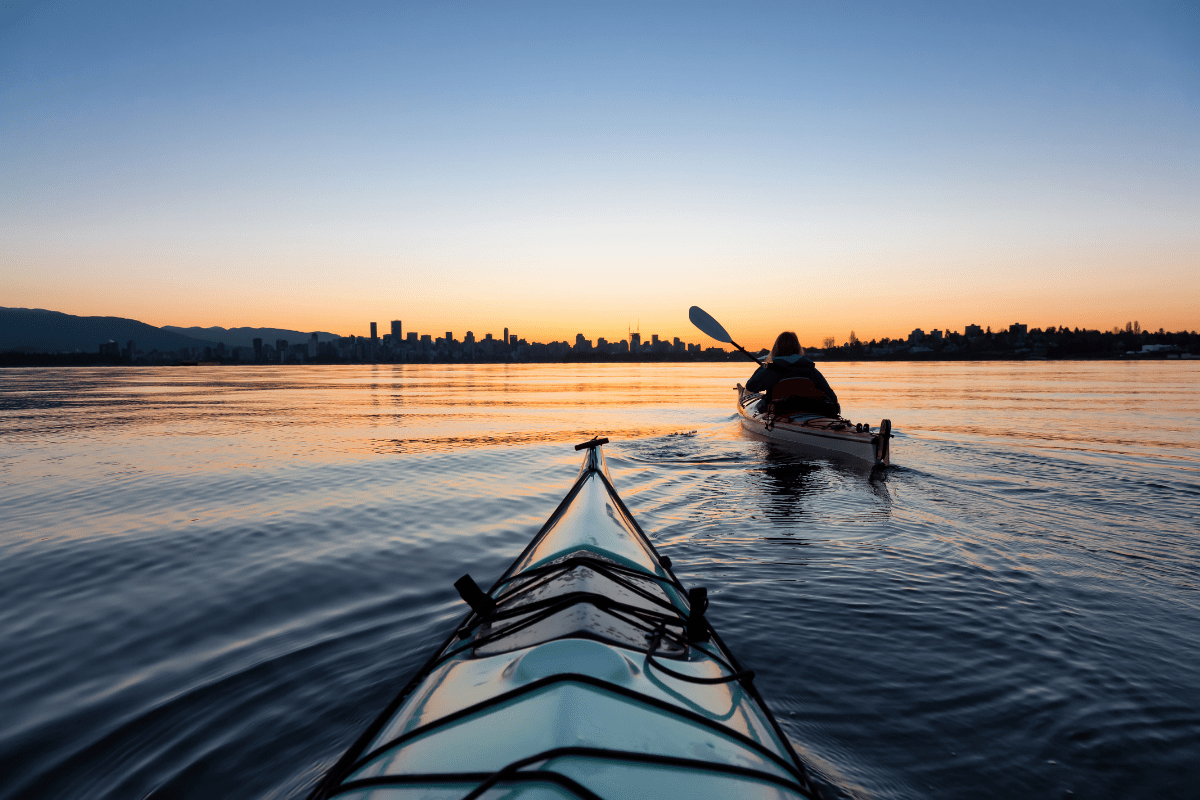Kentucky's historic sites aren't just dusty museums where you stare at stuff behind glass. They're living pieces of American history where you can walk through the world's longest cave system, stand where Lincoln was born, and experience the thunder of thoroughbreds at Churchill Downs.
Why Kentucky's historic sites matter more than you think
Let's talk money first because these numbers are wild. Kentucky's tourism industry generated a record-breaking $14.3 billion in economic impact in 2024, with 80 million visitors exploring the state. That's not just people buying bourbon and Derby hats… it's serious business supporting 97,394 jobs and pumping $1 billion into state and local taxes.
The state's heritage sites form the backbone of this economic engine. You've got a UNESCO World Heritage Site, multiple National Historic Landmarks, and the longest continuously held sporting event in America all within a few hours' drive of each other. Mike Mangeot, Kentucky's Tourism Commissioner who just nabbed the 2024 State Tourism Director of the Year award, puts it perfectly: visitors don't just come once, they become repeat visitors and advocates.
But here's what makes Kentucky special: these sites tell interconnected stories. The frontier that Daniel Boone opened through Cumberland Gap led to settlements like Fort Harrod, which grew into communities that produced leaders like Abraham Lincoln, whose legacy shaped the nation we know today. It's basically America's origin story, Kentucky edition.
Mammoth Cave: The underground wonderland that keeps getting weirder
Mammoth Cave National Park is the undisputed heavyweight champion of Kentucky attractions, and for good reason.
The mind-blowing basics
This isn't just a big hole in the ground. We're talking about 426+ miles of surveyed passageways, making it the longest known cave system on Earth by a ridiculous margin. Scientists keep finding new passages every year, so that number keeps growing. The whole system maintains a constant 54°F temperature year-round, which means you'll need a light jacket in July and won't freeze in January.
The park earned its UNESCO World Heritage Site designation in 1981 for both its geological features and biodiversity. About 600,000 people visit annually, with 400,000 of them taking cave tours. Pro tip: those tours sell out fast, especially in summer, so booking ahead on Recreation.gov isn't optional if you want to avoid disappointment.
Tours that match your adventure level
The National Park Service offers 12 different cave tours ranging from "my grandma could do this" to "I hope you've been doing squats." Here's what you're looking at price-wise:
- Frozen Niagara Tour ($26 adults): easiest option
- Historic Tour ($24 adults): the sweet spot
- Wild Cave Tour ($79 adults): six hours of crawling
- Discovery Tour: wheelchair accessible option
The Historic Tour covers two miles and includes 540 stairs, which sounds worse than it actually is. You'll see areas where Native Americans explored 5,000 years ago and where Stephen Bishop, an enslaved guide, made crucial discoveries in the 1830s that expanded our understanding of the cave system.
Recent discoveries that'll blow your mind
Between 2023 and 2025, scientists identified five new species of prehistoric sharks from fossils in the cave walls. These 340-million-year-old sharks were chilling in Kentucky when it was covered by an ancient sea. Park Superintendent Barclay Trimble called these discoveries "a remarkable addition to our understanding of ancient marine life," which is park-speak for "this is insanely cool."
The park itself is free to enter, so you can hike the surface trails and check out the visitor center without paying anything. Cave tours range from $15 to $79 depending on length and difficulty. The visitor center is fully accessible, and they've done a great job making at least one tour available for wheelchair users.
Churchill Downs: Where horses make millionaires and break hearts
Churchill Downs has hosted the Kentucky Derby every single year since May 17, 1875, making it the longest continuously held annual sporting event in the United States. Those iconic Twin Spires you see in every Derby photo? A 24-year-old architect named Joseph Dominic Baldez designed them in 1895, and they've been the symbol of American horse racing ever since.
The money and crowds are absolutely bonkers
Derby Day alone brings 156,710 people to the track, generating an estimated $400 million in economic impact for Louisville during Derby Week. Hotels hit 94-96% occupancy, restaurants have three-hour waits, and everybody pretends they understand horse racing for one glorious weekend.
The Kentucky Derby Museum operates year-round (except Derby weekend, ironically) from 8 AM to 5 PM Monday through Saturday. Admission runs $20 for adults and includes the Historic Walking Tour of the track and "The Greatest Race," a 360-degree film experience that genuinely makes you feel like you're in the starting gate.
Beyond the basics
Churchill Downs just wrapped up a $200 million renovation in 2024 that transformed the paddock area while revealing original architectural elements hidden for decades. CEO Bill Carstanjen noted the improvements "drove the Derby experience and our financial results to a level we could not have imagined," which is corporate-speak for "we're printing money."
Tour options include:
- Backstretch Workout Tours
- Behind the Scenes experiences
- Twilight Tours (seasonal)
- Bourbon and Bridles packages
That last one combines Kentucky's two favorite things, because of course it does.
Lincoln's humble beginnings in the Kentucky hills
The Abraham Lincoln Birthplace National Historical Park preserves two sites: the symbolic birthplace in Hodgenville and the Knob Creek farm where young Abe lived from ages 2 to 7.
What you'll actually see
The neoclassical Memorial Building, built between 1909 and 1911, features 56 steps representing each year of Lincoln's life. Inside sits a symbolic log cabin… and yes, "symbolic" means it's not the actual cabin where Lincoln was born. That one was lost to history, but this replica represents the frontier conditions that shaped America's 16th president.
The park attracts about 250,000 visitors annually, with peak attendance around February 12 (Lincoln's birthday). Both sites are completely free to visit, which feels appropriate for a president who believed in government of, by, and for the people.
The Memorial Building opens at 9 AM and closes at 4:30 PM, while the visitor center stays open until 5 PM. An accessible boardwalk called the "Pathway of a President Trail" provides wheelchair access for those who can't manage the symbolic steps.
Why it matters more than you'd expect
Christian McWhirter from the Abraham Lincoln Presidential Library emphasizes how Lincoln's frontier experiences here shaped his character. The isolation, hard work, and self-reliance required in frontier Kentucky created the foundation for the leader who would hold the nation together during its darkest hour.
The park offers Junior Ranger activities for kids and regular ranger-led talks that explore how chopping wood and reading by candlelight somehow produced one of history's greatest leaders. It's actually pretty inspiring when you think about it.
My Old Kentucky Home: Complicated history, beautiful mansion
My Old Kentucky Home State Park in Bardstown centers on Federal Hill, an 1818 mansion that inspired Stephen Foster's controversial state song. The site has evolved significantly in recent years, now presenting a more complete historical narrative.
Facing the full story
The mansion contains 85% original Rowan family furnishings, which is remarkable for a house this old. But here's where it gets real: the park now honestly addresses the enslaved people who built and maintained the property. Tours run hourly from 9 AM to 5 PM during summer months, costing $7 for adults.
The outdoor drama "The Stephen Foster Story" ran for an incredible 61 years from 1959 to 2020 at the J. Dan Talbott Amphitheatre, making it Kentucky's longest-running theatrical production. While the show has ended, the site continues to offer special programs like Christmas Candlelight Tours on three weekends following Thanksgiving.
Location, location, location
Bardstown calls itself the "Bourbon Capital of the World," and the numbers back it up. The town sits on the Kentucky Bourbon Trail, making it a natural stop for heritage tourists who want to explore multiple aspects of Kentucky culture. You can tour a historic mansion in the morning and hit three distilleries in the afternoon, which sounds like a pretty perfect day to me.
Cumberland Gap: Nature's gateway to the American West
Cumberland Gap National Historical Park preserves the natural passageway that changed American history.
The path that built a nation
Between 1775 and 1810, somewhere between 200,000 and 300,000 settlers crossed through this gap in the Appalachian Mountains. Daniel Boone blazed the Wilderness Road through here in 1775, creating America's first major westward migration route. Today, the park spans 24,000 acres across Kentucky, Tennessee, and Virginia.
The numbers tell the story: 797,346 visitors in 2023 generated $25.6 million in local economic impact. The park offers 85 miles of hiking trails, including routes to the Pinnacle Overlook at 2,440 feet elevation. You can drive to the overlook if hiking isn't your thing, though the walk is worth it if you're able.
Living history that actually lives
The Hensley Settlement provides one of the best living history experiences in the National Park system. This collection of 12 authentic homestead cabins shows how about 100 residents lived self-sufficiently from 1903 to 1951. You can reach it by shuttle or a 4-mile hike, and interpreters demonstrate everything from blacksmithing to moonshining… er, I mean "traditional distillation methods."
Gap Cave tours ($8 for adults) operate from May through October, taking you into a completely different underground world than Mammoth Cave. Recent trail restoration efforts cleared 500+ storm-damaged trees from 10 miles of trail, so access is better than ever.
Shaker Village: America's most successful communal experiment
Shaker Village of Pleasant Hill operated as America's third-largest Shaker community from 1805 to 1910, and what they built still amazes visitors today.
A different kind of historic site
This place brilliantly combines historical preservation with modern hospitality. The 34 original structures (built between 1809 and 1875) comprise Kentucky's largest National Historic Landmark, spanning 3,000 acres. But here's the kicker: you can actually stay overnight in 72 guest rooms spread across 13 historic buildings.
Daily admission costs $20 for adults, but it's free if you're an overnight guest. The Trustees' Table restaurant serves legitimate farm-to-table dining using ingredients from the village's own gardens and local farms. The BBC named The Inn a top hidden travel destination, and honestly, they weren't wrong.
More than just buildings
The village offers:
- Living history demonstrations
- 33 miles of hiking trails
- Traditional craft workshops
- Seasonal riverboat excursions
- Working farm experiences
The Dixie Belle paddle wheeler runs Kentucky River excursions from April through October, offering a different perspective on the landscape the Shakers called home. The whole property maintains its mission of demonstrating Shaker principles of simplicity, equality, and environmental stewardship, which feels surprisingly relevant today.
The lesser-known gems worth your time
Not every great historic site makes the tourist brochures, but these places deserve your attention.
Fort Knox's General George Patton Museum of Leadership showcases over 3,000 artifacts including Patton's famous ivory-handled pistols. You can visit without base access from Highway 31W. The Gold Vault storing 147.3 million ounces of bullion remains closed to tours… only three civilian visits have happened in its entire history.
Old Fort Harrod State Park in Harrodsburg marks Kentucky's first permanent settlement from 1774. For $7 admission, you get a full-scale replica fort, living history demonstrations, and the cabin where Lincoln's parents got married in 1806.
Camp Nelson National Monument near Nicholasville became America's 418th National Park unit in 2018. Over 10,000 formerly enslaved men became Union soldiers here during the Civil War. It's the only recruitment center landscape that was never developed after the war, preserving this powerful story intact.
Big Bone Lick State Historic Site holds the weird but important distinction of being the "Birthplace of American Vertebrate Paleontology." Thomas Jefferson examined fossils here, and William Clark conducted North America's first organized archaeological excavation at the site in 1807. Today you can see active salt springs and a live bison herd alongside the museum.
Planning your Kentucky history road trip
Kentucky's heritage sites cluster conveniently for efficient multi-day exploration. Lexington makes an ideal base for the central Kentucky sites… you're 30 minutes from Shaker Village, downtown has the Mary Todd Lincoln House, and you're surrounded by bourbon distilleries.
Louisville anchors the western cluster with Churchill Downs and provides a good jumping-off point for Mammoth Cave, about 90 minutes south. Most state historic sites charge $6-8 admission, making a multi-site visit surprisingly affordable.
Peak season runs April through October when all sites offer full programming. But honestly, the caves and indoor attractions provide great year-round options. Group rates are available at most locations with advance booking, and many sites offer educational programs that make them perfect for family trips that sneak in some learning.
The bourbon connection you can't ignore
Look, you can't talk about Kentucky tourism without mentioning bourbon. The Kentucky Bourbon Trail welcomed a record 2.7 million visitors in 2024, with 60 distilleries now open compared to just 7 in 1999. Many travelers combine heritage and bourbon tourism, because why wouldn't you?
Eric Gregory of the Kentucky Distillers' Association is pushing to expand bourbon's global reach, particularly in Asia. But for visitors, the beauty is how naturally bourbon tourism integrates with historic sites. Bardstown, Lexington, and Louisville all offer both historic attractions and world-class distilleries within minutes of each other.
What's new and what's coming
Kentucky's historic sites keep evolving. The $393 million renovation of the Kentucky Exposition Center broke ground in August 2024. The Kentucky Military History Museum in Frankfort is getting renovated for its 175th anniversary in 2025. Meanwhile, Fort Boonesborough's campground remains closed until October 2026 due to 2024 flood damage, though the fort itself operates normally.
Mammoth Cave's fossil discoveries continue making international headlines, establishing it as one of North America's most important paleontological sites. Camp Nelson's 160th Anniversary programming runs through 2026 with period-dressed interpreters and expanded Junior Ranger programs.
Technology improvements include enhanced digital interpretation at multiple sites, making the history more accessible and engaging for younger visitors who expect interactive experiences.
Making it happen
Kentucky's heritage tourism offers remarkable depth without requiring a trust fund to experience it. The sites tell America's story through caves, horses, presidents, and pioneers. With tourism supporting nearly 100,000 jobs and generating over a billion in tax revenue, these aren't just museums… they're economic engines that preserve the past while building the future.
Commissioner Mike Mangeot said it best: visitors fall in love with Kentucky and become repeat visitors and advocates. After experiencing these sites yourself, you'll understand why. The history is real, the stories are powerful, and the bourbon is excellent. What more could you want from a vacation?





